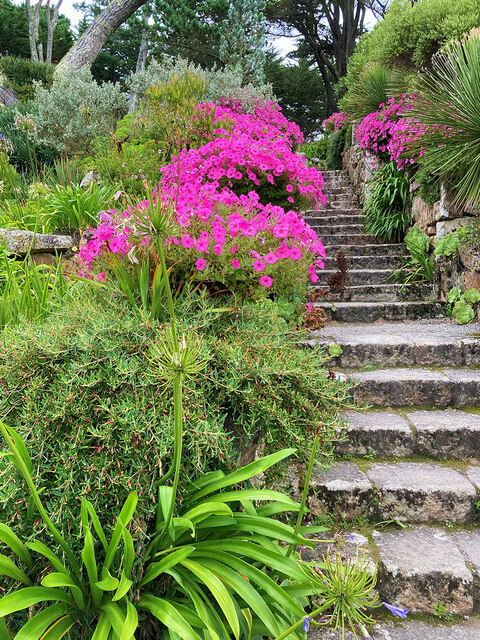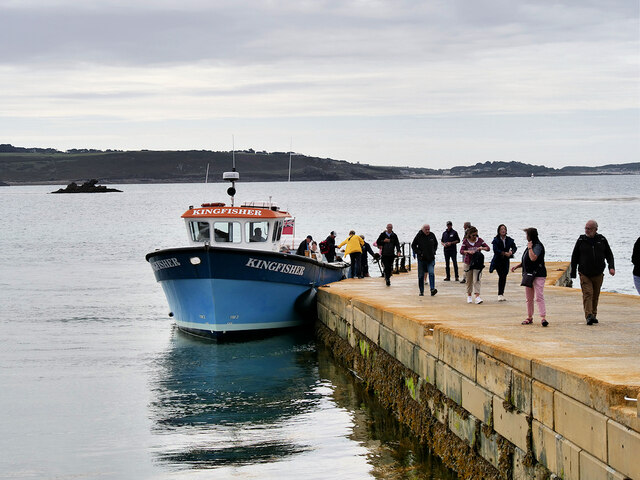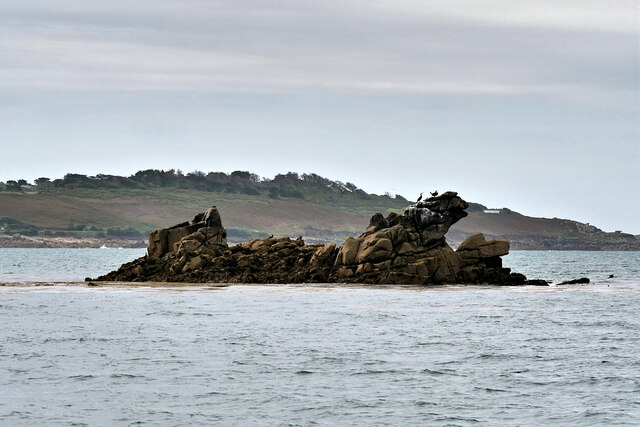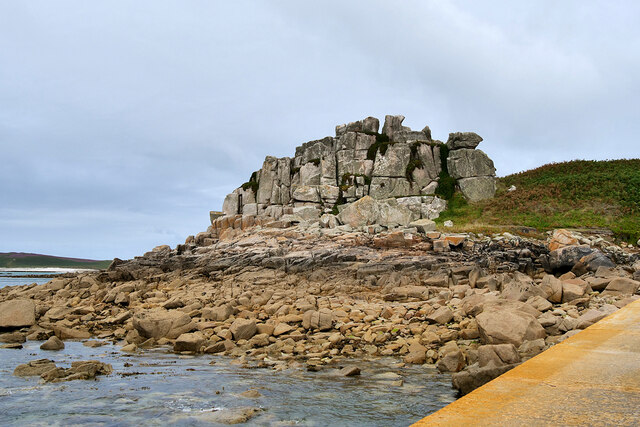Nut Rock
Island in Cornwall
England
Nut Rock

Nut Rock is a small uninhabited island located in Mount's Bay, off the coast of Cornwall, England. Situated approximately 1.5 kilometers southwest of the town of Marazion, it is part of the Isles of Scilly archipelago. The island is characterized by its distinctive shape, resembling a nut or an overturned boat, which gives it its name.
Covering an area of about 0.2 hectares, Nut Rock is predominantly composed of granite, a common feature of the Cornish coastline. It rises to a height of around 6 meters above sea level and is surrounded by shallow waters, making it visible during low tide but submerged during high tide.
Despite its small size, the island is of significant importance to wildlife. It serves as a nesting site for various seabird species, including cormorants, gulls, and shags. Additionally, the surrounding waters are home to a diverse range of marine life, attracting snorkelers and scuba divers.
Access to Nut Rock is restricted due to its protected status as a Site of Special Scientific Interest (SSSI). It is a designated geological conservation site, showcasing unique rock formations and providing a habitat for rare flora and fauna.
Visible from the mainland, Nut Rock adds to the natural beauty of Cornwall's coastline, attracting visitors who enjoy birdwatching, nature photography, and exploring the area's rich biodiversity.
If you have any feedback on the listing, please let us know in the comments section below.
Nut Rock Images
Images are sourced within 2km of 49.931299/-6.3363447 or Grid Reference SV8812. Thanks to Geograph Open Source API. All images are credited.














Nut Rock is located at Grid Ref: SV8812 (Lat: 49.931299, Lng: -6.3363447)
Division: Isles of Scilly
Unitary Authority: Isles of Scilly
Police Authority: Devon and Cornwall
What 3 Words
///nibbled.twists.destroyer. Near Bryher, Isles of Scilly
Nearby Locations
Related Wikis
HMS Colossus (1787)
HMS Colossus was a 74-gun third-rate ship of the line of the Royal Navy. She was launched at Gravesend on 4 April 1787 and lost on 10 December 1798. During...
Oliver's Battery, Tresco
Oliver's Battery is a ruined artillery battery on the island of Tresco in the Isles of Scilly off of Cornwall, England. It was built by the Parliamentarian...
Samson, Isles of Scilly
Samson (Cornish: (Enys) Sampson) is the largest uninhabited island of the Isles of Scilly, off the southwestern tip of the Cornish peninsula of Great Britain...
Tresco Heliport
Tresco Heliport (ICAO: EGHT) is a heliport located on the island of Tresco, in the Isles of Scilly off the southwest coast of the United Kingdom. The heliport...
Have you been to Nut Rock?
Leave your review of Nut Rock below (or comments, questions and feedback).






